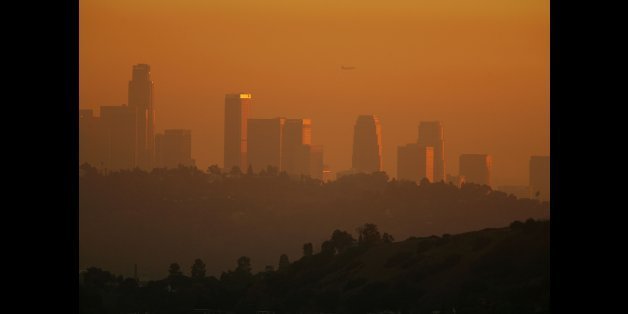
The American Lung Association's annual State of the Air report, which ranks air pollution in cities across the country, is not a particularly uplifting read. While many areas have made great strides in reducing air pollution, approximately 44 percent of our country is still breathing dangerously dirty air.
Like last year and the year before, I felt a pang when I saw the top five regions with the most air pollution. All five of them are in my home state of California, relatively low-income, and heavily Latino. The ranking reflects a problem that is not unique to California: too often, those most vulnerable to the health and economic impacts of air pollution are those who breathe the dirtiest air.
There was some good news from the report. Over the past year, the United States saw an overall reduction in the two types of pollution most directly dangerous to public health: ozone (a.k.a smog) and particle pollution (from exhaust). And the country's air quality has improved steadily since the Clean Air Act was passed in 1970, even as our population, driving hours, and GDP have grown. This cleaner air is the direct result of much-needed air standards, which led to cleaner-burning power plants and diesel engines, as well as a surge in renewable energy sources.
However, these benefits have not been evenly spread throughout the country nor fully realized. The greatest gains were seen in reduced particle pollution in the East and Midwest, while Western states saw pollution increase in some areas, exacerbated in part by ongoing drought, grass fires and wildfires.
Climate change is poised to make drought even more serious in many parts of the country, and give us more scorching summer days that are known to generate ozone. The lack of rain we're seeing means more stagnant days where pollution can bake and turn to ozone, a gas that is beneficial up in the stratosphere but is dangerous for our health at ground level. Drought also leads to more frequent and expansive wildfires, which spew particles into the atmosphere that affect even distant towns.
By all metrics in the report, the dirtiest air in the country was in the Los Angeles/Long Beach region and in various regions of the Central Valley. This is likely due to the intersection between local industry emissions, climatic and geographic features, and the double environmental standard that often leads to dirty industries polluting more in poorer communities. Nationwide, almost one half of the Latino population lives in the country's top 25 most ozone-polluted cities.
The Los Angeles-Long Beach metropolitan area has the nation's largest Latino population (5.8 million in 2011, or 44% of the total population) and it ranked first in ozone pollution and fifth in particle pollution. Fresno-Madera, Bakersfield, and Visalia-Porterville-Hanford are the top three in particle pollution, and their Latino populations are populations are all 50 percent or over. This is a problem our community cannot ignore.
The impact that this invisible mess is having on our health is not good. The Environmental Protection Agency has concluded that both ozone pollution and particle pollution pose serious health risks. Both have been linked to respiratory problems such as heightened suffering from asthma, worsened COPD, and lung inflammation. Particle pollution has been proven to cause cardiovascular harm such as heart attacks and strokes, and it is linked to early death. Ozone has been tied to both of these risks, as well as the risk of developing cancer. There is also emerging evidence that both types of pollution could cause reproductive or developmental harm, and that particle pollution may cause damage to the central nervous system, particularly for children with early exposure.
These problems can be compounded by lack of economic opportunity, pre-existing health problems, lack of medical insurance, and proximity to highways, factories and other sources of air pollution. All of these risk factors are prevalent within the Latino community, as we found in U.S. Latinos and Air Pollution: A Call to Action back in 2011. A holistic approach to this environmental inequality must include not only stronger environmental protections but also greater access to adequate healthcare, greener neighborhoods, access to green space and to nutritious food sources, and to jobs that pay a living wage.
Our leaders at local, state and national levels are facing a choice: Continue to strengthen air standards that protect our health and fight climate change, or cave to unrelenting pressure from industry to dilute and dismantle these protections. There are a number of key choice points coming up.
This summer, the Obama administration is due to announce final standards for cutting carbon pollution from power plants, which has high stakes for both human health and the fight against climate change. On October 1, the EPA will announce a revised particle pollution standard that must be stronger than what is currently in place. The ALA report mentions other important upcoming legislative opportunities, such as protecting downwind communities from interstate pollution, cleaning up dirty diesel vehicles, and improving the air pollution monitoring network. Each of these measures has a role to play in protecting our health, spurring the green economy, and avoiding the worst impacts of global warming.
We need to let decision makers know that we want cleaner air, cleaner energy sources and a response to the pollution that causes climate change, for ourselves, for our neighbors, for our friends and family members. Make your voice heard. Add your voice to the conversation by visiting our action center now.
